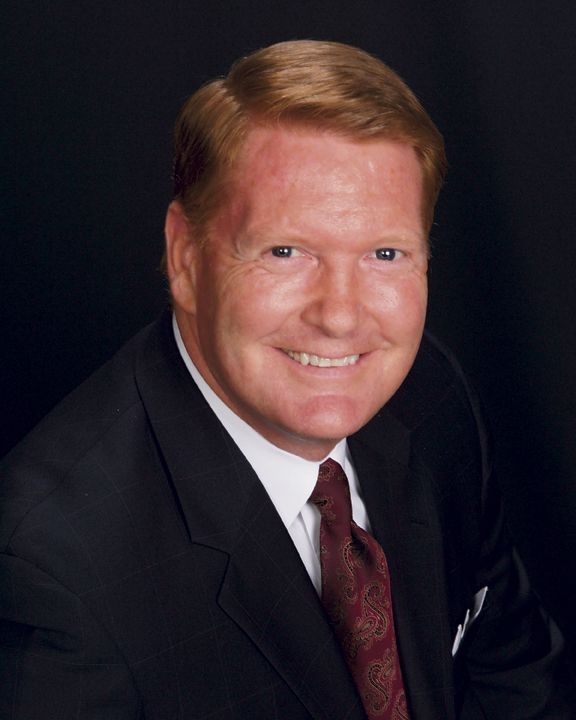YOUNG PROFESSIONALS
WORKING THE ROOM
Mingling tips for your next networking event
By Christopher W. Cook
I am not a networker. The “cocktail hour” is easily the most challenging segment of any conference I attend.
John Green, a fellow Hoosier and author of the young adult novels The Fault in Our Stars and Paper Towns, once said on Vlogbrothers—a YouTube video blog he works on with his brother Hank—“Writing is something you do alone. It’s a profession for introverts who want to tell you a story but don’t want to make eye contact while doing it.” I agree.
But still, I put on my networking cap—sometimes this is a physical cap—and I go out and mingle to the best of my comfort level. It has to be done. Eighty percent of the professionals questioned in a 2017 LinkedIn global survey consider professional networking to be important to career success.
A few years ago, I attended the first IRMI Young Risk Professionals Summit in Dallas. Being the inaugural event, it was relatively small and fitting for my crowd-size preference. It also helped that one of the opening sessions was called Mastering the Art of Mingling, presented by Daniel McGarvey, managing director at Marsh.
So, for my fellow introverts and others seeking advice on how to successfully mingle among a crowd of strangers, let’s discuss some networking tips.
A cocktail reception is held at almost every conference I attend. They provide a great opportunity to “work the room” after a day of attending educational sessions and/or visiting with vendors.
“Why does the phrase ‘working the room’ carry negative connotations?” asks McGarvey. “There’s nothing wrong with working a room. If you’re at a function, and you’re there to work, that’s what you’re there for. You’re there to make contacts with people and the more contacts you make, the more likely you’ll meet people who can help advance your career.”
Mingling is a skill that can be learned by first unlearning some of the standards your mother taught you when you were a child. These include:
- Never speak to strangers
- Don’t speak unless spoken to
- You should be seen and not heard
“Mom’s intentions were good when you were a kid, but now you’re an adult and it’s time to let go of these,” McGarvey says.

—Daniel McGarvey
Managing Director
Marsh
How not to work a room
Here are a few tips to remember when you walk into a networking scenario.
First, you’re there to meet new people and expand your network.
“It’s easy to look around a room and find somebody you know, immediately gravitate to them, and spend the entire time talking to that person,” says McGarvey. “But you’re there to speak with people you don’t know. Get past the nervousness. The person sitting there alone is probably every bit as nervous as you are.”
Another point to keep in mind: Even though networking events serve food and beverages, they shouldn’t become your priority.
“You didn’t go there for the food,” explains McGarvey. “Every function has hors d’oeuvre or appetizers, but I’ll generally try to eat before I go to a function. If your plan is to circle the appetizer table the entire function, how are you able to mingle when you’re holding a plate of food in one hand—even a small plate—and a glass in the other?
“If you’re eating, almost automatically you’re going to head to a corner and take yourself off the playing field. You’re unwittingly throwing off signs that you don’t want to be bothered. Take an appetizer, eat it right away and put the toothpick on the tray. You need to have a hand open in order to shake hands.”
What about alcoholic beverages—whether free of charge, offered through a ticket system, or served at a cash bar?
“If you don’t drink, feel free to get a soda water in a tall glass with a lime,” McGarvey says. “And remember that excessive drinking at a job function could equal job hunting.”
You’ve probably heard that when preparing for a job interview, you should dress for the position you want. Networking events are no different.
“A rule of thumb is to dress one level up,” McGarvey says. “Appearance matters; you want to make a good first impression.” Research the details of the event for guidance on appropriate attire.
“Dress depending on what type of event you are attending,” McGarvey adds. “If you’re going to a young leader event held at a winery, feel free to wear jeans and a polo shirt. You don’t want to feel awkward by being overdressed for the occasion.”
Another fashion tip is to make sure that people don’t see your clothes before they see you. Avoid wearing excessive jewelry or a “loud” tie. Wear clothes that are right for the event and represent who you are. Remember that “the little things count.” Have your shoes shined and your fingernails trimmed. Make it look easy.
When I have to fly to attend an event, I make sure that the hotel has an iron. I press and hang up my clothes first thing after arriving—unless I could use a brief snooze first.
“When I have a long drive to attend a meeting, I always hang my freshly pressed shirt in the back of my car,” McGarvey says. “I also carry a little bottle of concentrated liquid starch to be able to give my other shirts that freshly pressed look no matter how long the trip.”
Combined with water in a spray bottle, it can be mixed each day of a multi-day trip.
Preparation
As mentioned previously, it’s always a good idea to research a networking event before attending. Take into consideration points like:
- What is the function?
- Who is the host or hostess?
- What kind of people will I meet?
- What is the dress code?
- What topics are likely to come up, and which ones should be avoided?
- What key people do I need to know?
“Do your homework,” says McGarvey. “Go to the organization’s website and see who its officers are. Look at what the organization does. Learn something about it that you can discuss in a conversation at the event. That’s a good way to make a first impression.”
McGarvey also recommends arriving early to networking events.
“A lot of people choose to get there late because it’s easier to dive into a crowd than to walk into an empty room,” he says. “Get there early. I can’t stress this enough.
“When you get there early you can learn the layout of the room—the bar’s over here, there’s tables over there—and you can get comfortable. Introduce yourself to people as they come in and exchange pleasantries with the wait staff. Breaking the ice by introducing yourself to them is good practice and good manners.”
Another good way to prepare yourself is to practice delivering an elevator speech—a clear, brief message about you.
“If you’ve never practiced your elevator speech, you’re really hurting yourself,” says McGarvey. “With our tendency to have short attention spans, you’re likely to only have a 20-second opportunity to talk about yourself. You want to grab their attention. Entice someone with what you do, why it’s important, and why you’re enthused and excited about what you do.
“Of course at some point it is equally important to say, ‘I’m not here to talk about me; tell me about yourself.’”
Additional tips
Although it can be awkward talking to strangers in a group setting, it’s important not to constantly be looking down at the ground.
“It’s not the time to check your shoes. Be confident,” McGarvey says.
It’s just as important to avoid standing around in a group whose conversation devolves into tawdry or mean-spirited industry gossip.
“Don’t take the bait,” McGarvey says. “This isn’t what networking is all about. It’s about constructive conversations.”
Once that constructive conversation begins with a fellow attendee, keep it going by asking questions like:
- How did you get started in the industry?
- How is it different today than when you started?
- What do you enjoy most about what you do?
- What advice would you give to someone who is just starting out?
- What is the most interesting person, place or experience you’ve had?
- How do you come up with your ideas?
While small talk and business conversation are expected at networking events, occasionally the topic will gravitate toward something unpleasant—usually politics.
“Let’s say there’s a group of three or four people and they’re having a vibrant conversation and it turns into politics; it leads from one topic to the next and it starts getting animated,” McGarvey says. “Feel free to play the referee and deliver a line like, ‘Well, we’re probably not going to solve that problem tonight. Shall we talk about something else?’
“Try this if you’re feeling uncomfor-table and don’t want the conversation to turn into an awkward one. The other parties involved with the heated discussion will thank you.”
At some point you’ll likely meet a person who won’t stop talking.
“You’ve become their safety blanket,” McGarvey says. “You try to break it off, but they keep going.”
A few techniques you could use to “escape”:
- Say “It’s been a pleasure, but I should go mingle.”
- Or “I don’t want to monopolize your time.”
- The handoff—introduce them to someone else
- The fadeout—if there are four or more people in the group, casually step away
- Ask for a business card
Regarding business cards: “When do you exchange one?” asks McGarvey. “First of all, never lay it down on the table. Think of your business card as ‘this is me.’ In Japan they exchange them with both hands, very carefully. It’s received and read. Some of us tend to put it in our pocket right away.”
If you don’t have a card, you can take one of theirs and tell them you’ll send them one. You can do so in an e-card via email.
Using these techniques should help you expand your network at your next social gathering. And don’t forget to reach out to those who struggle with socializing in a crowd. You’ll probably find this writer sitting at a table by himself, casually observing from a distance. Happy mingling. Work that room.






